FAQ - Advanced Bathroom Queries
Can You Flush Diapers Down the Toilet
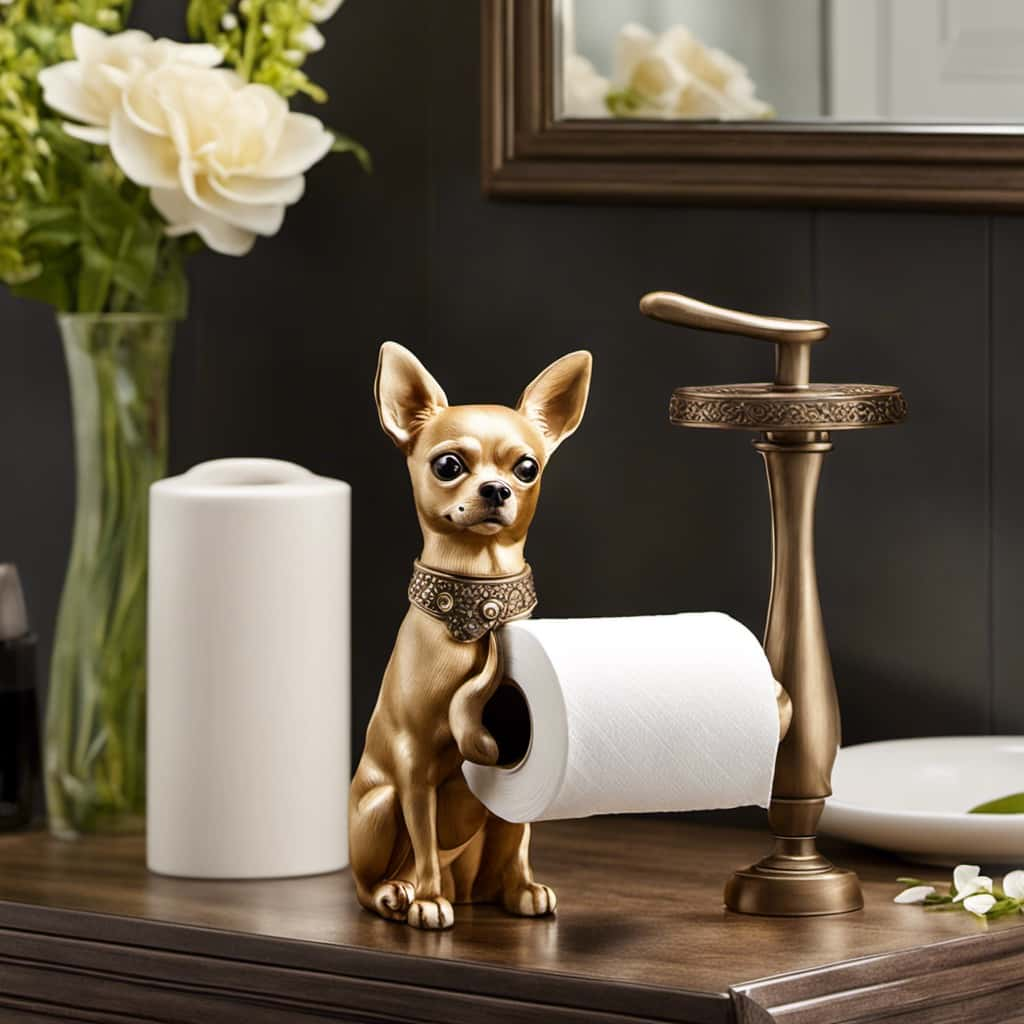
Did you realize that in just the United States, it’s estimated that about 18 billion single-use diapers are discarded annually?
Many parents wonder if they can flush diapers down the toilet as a convenient disposal method.
In this article, we will explore the risks and consequences of flushing diapers, understanding plumbing systems, and the environmentally friendly alternatives.
By the end, you’ll have the knowledge you need to make informed choices about diaper disposal.
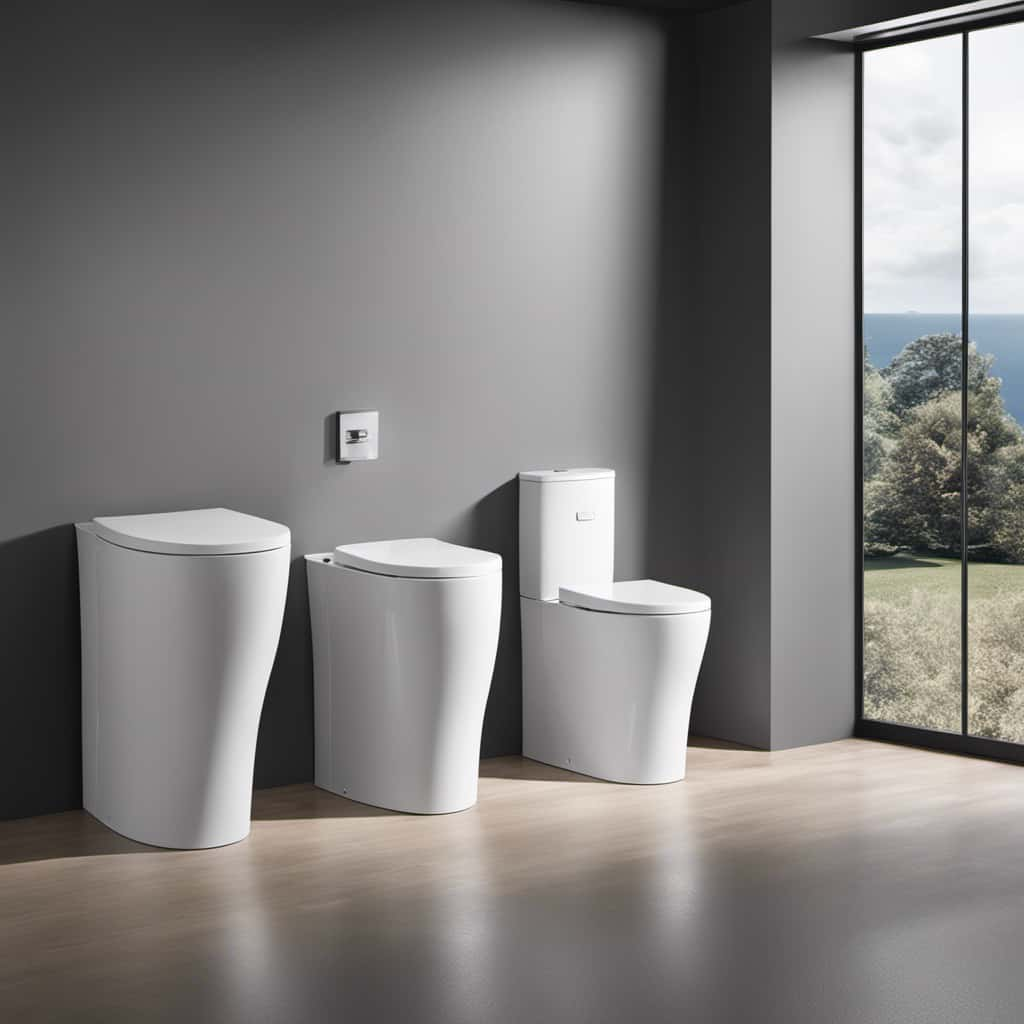
Let’s dive in!
Key Takeaways
- Flushing diapers can cause toilet clogs and blockages in the pipes.
- Proper disposal of diapers in a trash can is important to prevent clogs and sewage backups.
- Flushing diapers can lead to costly repairs and potential health hazards in the sewer system.
- Improper diaper waste management contributes to landfill pollution and harmful environmental consequences.
The Risks of Flushing Diapers
When it comes to flushing diapers down the toilet, there are a number of risks that we need to be aware of. One major risk is toilet clogs. Diapers aren’t designed to break down in water like toilet paper, so when flushed, they can easily get stuck in the pipes and cause blockages. These clogs not only disrupt the normal flow of water, but they can also lead to sewage backups, which can be messy and unsanitary.
Sewage backups can cause extensive damage to your plumbing system, resulting in expensive repairs and potential health hazards. Therefore, it’s important to never flush diapers down the toilet. Instead, dispose of them properly in a trash can.
Understanding the risks involved will help us prevent unnecessary plumbing problems and maintain a healthy and functional toilet system.

Understanding Toilet Plumbing Systems
As we delve into the topic of ‘Understanding Toilet Plumbing Systems,’ it’s important to recognize the intricacies involved in maintaining a functional and efficient toilet system. Here are some key points to keep in mind for proper toilet maintenance and to avoid common plumbing issues:
- Regular inspection and cleaning of the toilet tank, bowl, and surrounding areas can prevent buildup and potential clogs.
- Understanding the flushing mechanism of your toilet, whether it’s gravity-fed or pressure-assisted, can help you troubleshoot any flushing problems.
- Pay attention to the water supply valve and ensure it’s working properly to avoid leaks or inadequate water flow.
- Regularly check the flapper valve and the fill valve for any signs of wear and tear, as these components are crucial for proper flushing and water control.
- Proper disposal of waste and avoiding flushing non-flushable items, such as diapers, can prevent blockages and costly repairs.
Impact on Sewer Systems
To address the impact on sewer systems, let’s explore the consequences of flushing diapers down the toilet. Flushing diapers can lead to toilet clogging and blockages in the sewer system. Diapers aren’t designed to break down quickly like toilet paper, so they can easily get stuck in the pipes, causing backups and costly repairs.
Additionally, when diapers reach the sewage treatment plants, they can cause operational issues. The large size and absorbent nature of diapers can overload the treatment systems, leading to decreased efficiency and increased costs. Proper disposal of diapers in the trash is essential to prevent these problems and maintain the functionality of the sewer system.
Now let’s delve into the environmental consequences of flushing diapers down the toilet.
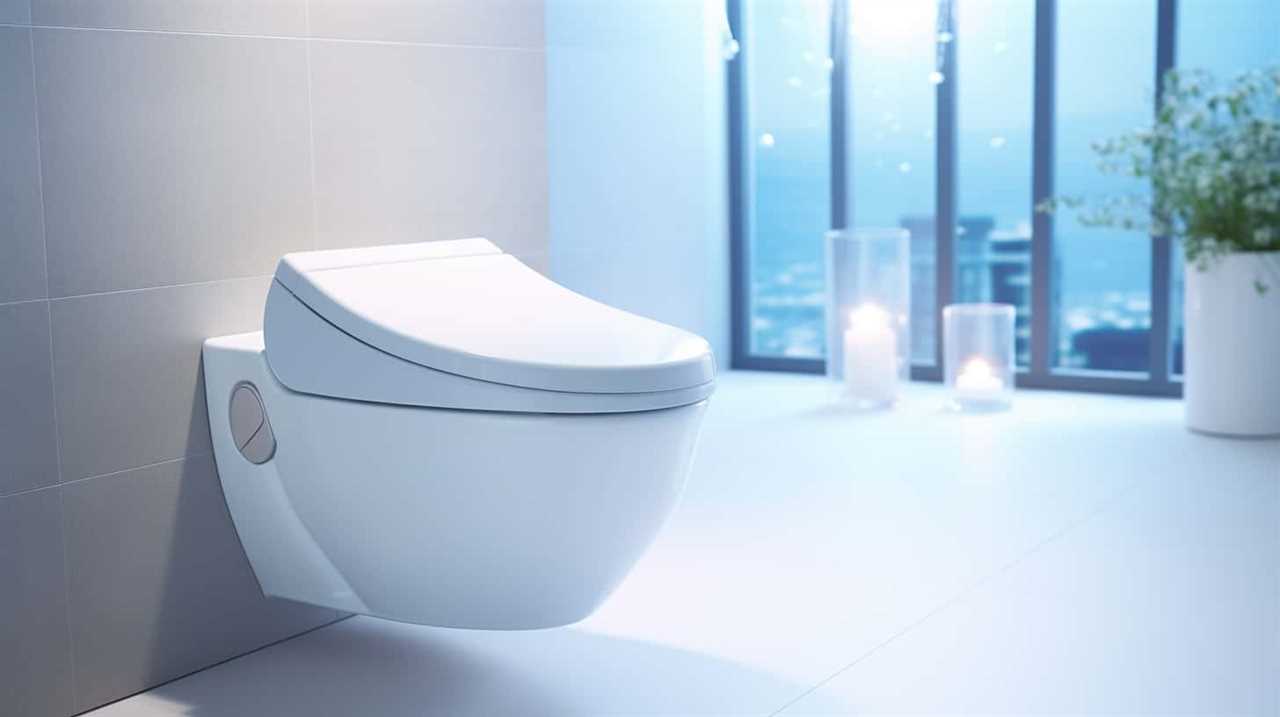
Environmental Consequences
For the sake of our environment, we need to consider the detrimental effects of flushing diapers down the toilet. Improper diaper waste management can lead to significant landfill pollution, contributing to the degradation of our ecosystems. Here are some key points to consider:
- Diapers take hundreds of years to decompose, adding to the already overwhelming amount of waste in landfills.
- The plastic and chemical components in diapers can leach harmful substances into the soil and water, posing a threat to wildlife and human health.
- Landfills are already struggling to manage the sheer volume of waste, and adding diapers to the mix only exacerbates the problem.
- Incineration of diapers releases harmful pollutants into the air, further contributing to environmental degradation.
- Implementing effective diaper waste management strategies, such as recycling or composting, can help mitigate the negative impact on our environment.
Understanding the environmental consequences of flushing diapers down the toilet highlights the importance of exploring alternative methods for diaper disposal. Now, let’s delve into the composition and breakdown of diapers to gain a better understanding of their impact.
Diaper Composition and Breakdown
When it comes to diaper composition and breakdown, it’s important to understand the materials used and their impact on the environment.
Diapers are typically made of a combination of plastic, wood pulp, and absorbent gel. While some components may break down over time, the plastic content in diapers can take hundreds of years to decompose fully.
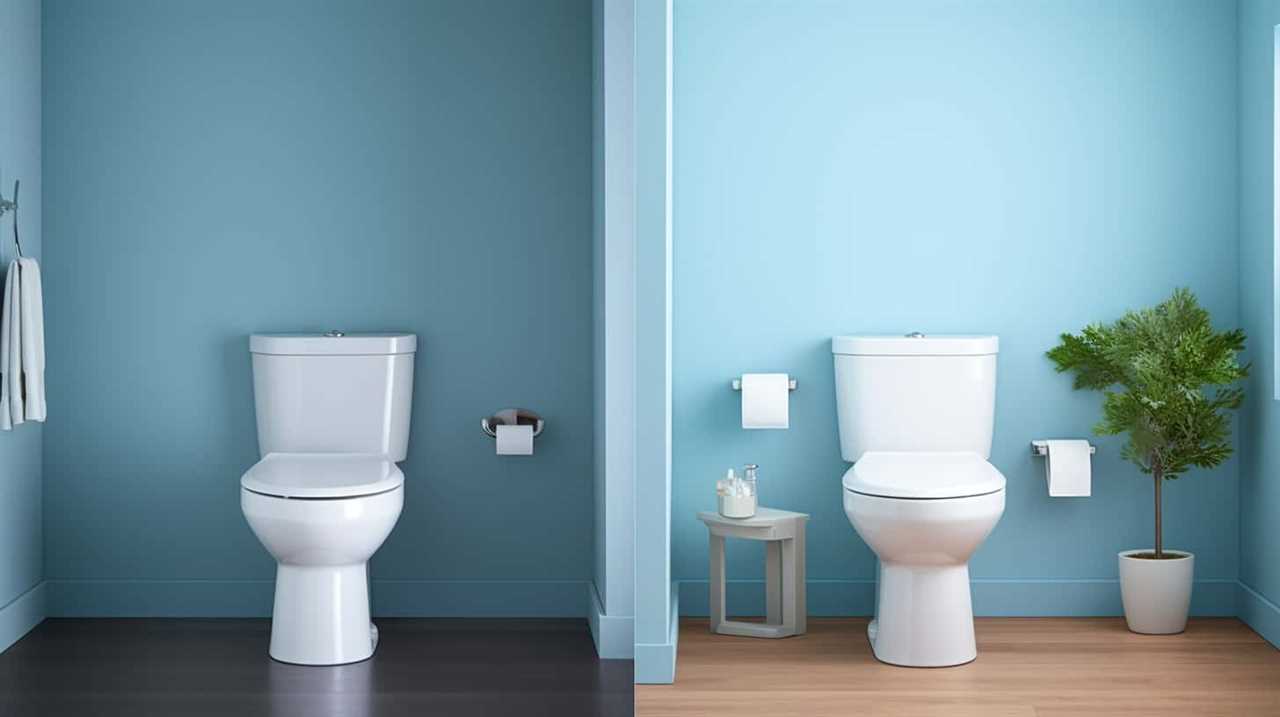
Considering the environmental consequences, it’s crucial to explore alternatives to flushing diapers down the toilet.
Diaper Materials Breakdown
As we explore the topic of diaper materials breakdown, it’s important to understand how diapers are composed and break down over time. Diapers are made up of several materials that contribute to their composition and decomposition.
Here is a breakdown of the diaper materials and their decomposition process:
- Superabsorbent Polymers (SAP): These polymers have the ability to absorb and retain large amounts of liquid, but they don’t break down easily. It takes a long time for SAP to decompose in landfill disposal sites.
- Polyethylene (PE): This material is used for the outer layer of diapers and isn’t biodegradable. It remains in the environment for hundreds of years, contributing to pollution.
- Wood Pulp: Diapers contain a significant amount of wood pulp, which is biodegradable. However, the decomposition process is slow and can take years.
- Elastic: The elastic components of diapers, such as waistbands and leg cuffs, aren’t easily biodegradable and can persist in the environment for a long time.
- Adhesives: Diapers are held together by adhesives, which don’t decompose easily and can contribute to landfill waste.
Understanding the composition and breakdown of diaper materials is crucial in finding more sustainable solutions for diaper disposal.
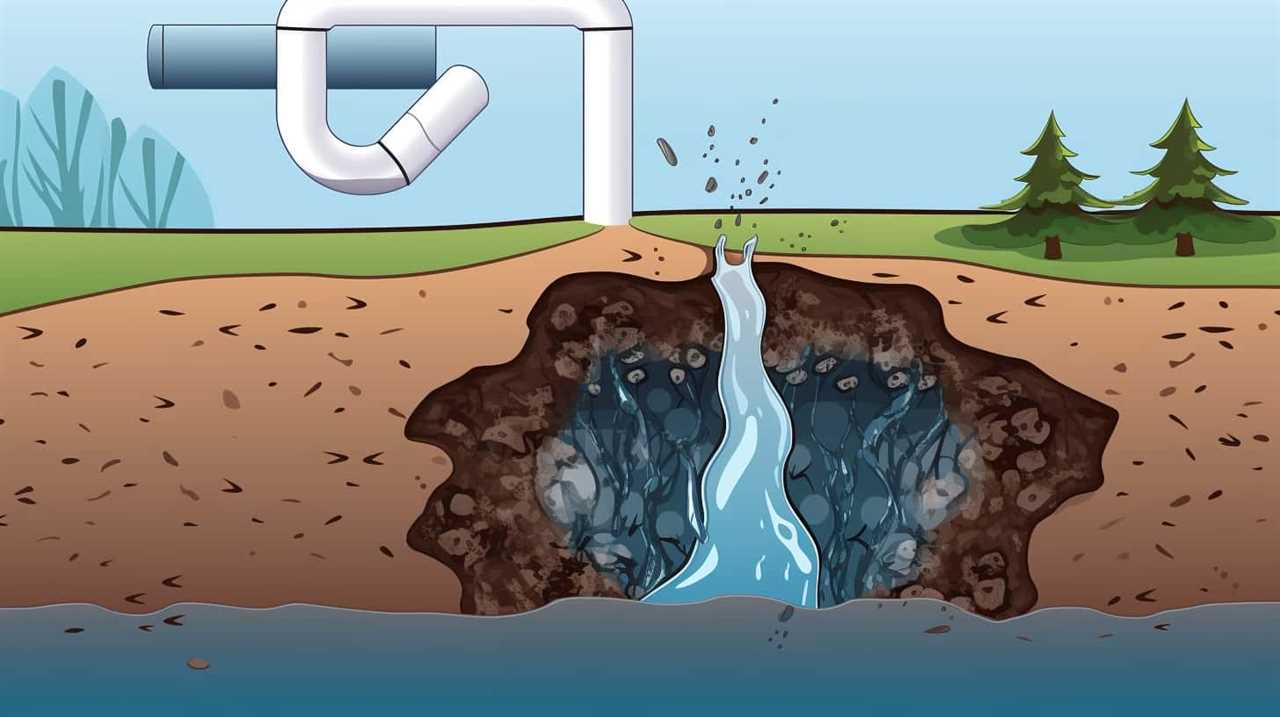
Environmental Impact Considerations
Our analysis of the environmental impact of diaper composition and breakdown reveals significant concerns.
Diapers are primarily made of non-biodegradable materials such as plastic and synthetic fibers. When these diapers end up in landfills, they can take hundreds of years to decompose, contributing to the growing problem of waste management.
Additionally, the production of these diapers involves the use of fossil fuels and the release of greenhouse gases, further exacerbating environmental issues.
However, there are biodegradable diaper options available in the market that aim to address these concerns. These diapers are made from sustainable materials that can break down more easily, reducing their environmental impact.
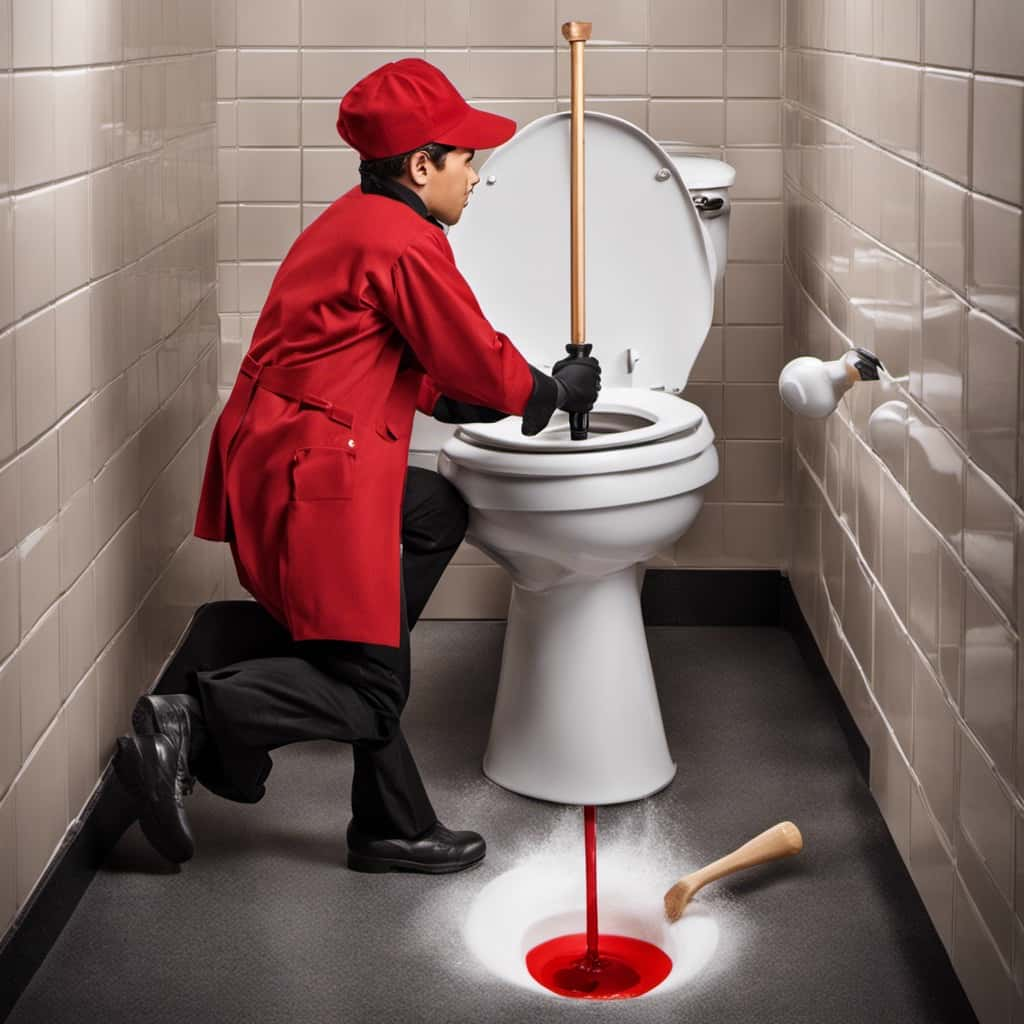
In the next section, we’ll explore alternatives to flushing diapers, considering both the environmental and practical aspects.
Alternatives to Flushing Diapers
To explore alternatives to flushing diapers, we’ll discuss the composition and breakdown of diapers and their impact on the environment. When it comes to diaper disposal alternatives, there are eco-friendly diaper options available that can help minimize the negative effects on our planet.
Consider the following:
- Biodegradable diapers: These diapers are made from plant-based materials that can break down naturally over time, reducing their environmental impact.
- Cloth diapers: Reusable cloth diapers are a popular choice for eco-conscious parents. They can be washed and reused multiple times, reducing waste and saving money in the long run.
- Composting: Some diapers can be composted in facilities designed to handle organic waste. These facilities facilitate the breakdown of diapers into nutrient-rich compost.
- Diaper recycling programs: Various organizations offer diaper recycling programs, where used diapers are collected, sanitized, and transformed into new products such as plastic lumber or roofing materials.
- Hybrid diapers: These diapers combine the convenience of disposable diapers with the eco-friendliness of cloth diapers. They consist of a reusable cloth cover with a disposable insert, reducing waste while maintaining convenience.
Alternatives to Flushing Diapers
One alternative to flushing diapers is using cloth diapers instead.

Cloth diapers are a more environmentally friendly disposal option compared to disposable diapers. They can be reused multiple times, reducing the amount of waste that goes into landfills.
Cloth diapers are made from materials such as cotton or bamboo, which are biodegradable and less harmful to the environment.
When it comes to diaper disposal methods, cloth diapers require a different approach. After use, they can be washed and sanitized, ready for reuse. Some cloth diaper users opt for diaper services, where the diapers are collected, washed, and returned. This eliminates the need for individual washing and ensures proper sanitation.
Diaper Disposal Methods
When it comes to disposing of diapers, there are several methods that can be used. Here are some diaper disposal methods and diaper pail options to consider:

- Diaper Pails: These specially designed pails have a sealing mechanism that traps odors and keeps them contained until you’re ready to empty the pail.
- Diaper Genies: Similar to diaper pails, these devices offer a hands-free disposal experience by wrapping each diaper individually in a scented bag.
- Trash Bins: Using a regular trash bin with a lid can also be an option, especially if you regularly take out the trash to prevent odors from lingering.
- Diaper Bags: These disposable bags are convenient for on-the-go diaper changes and can be tied up securely before disposing of them in the trash.
- Diaper Services: Some companies offer diaper services where they pick up soiled diapers and provide fresh ones, reducing the need for disposal.
Choosing the right diaper disposal method depends on your specific needs and preferences. Consider factors like odor control, convenience, and environmental impact when making your decision.
Proper Diaper Disposal Etiquette
When it comes to proper diaper disposal etiquette, it’s important to consider environmentally-friendly options.
Instead of flushing diapers down the toilet, which can lead to clogged pipes and sewage backups, it’s recommended to dispose of them in the trash.
Additionally, improper diaper disposal can pose health and safety risks, such as the spread of bacteria and odors, so it’s crucial to follow proper disposal methods to maintain a clean and healthy environment.
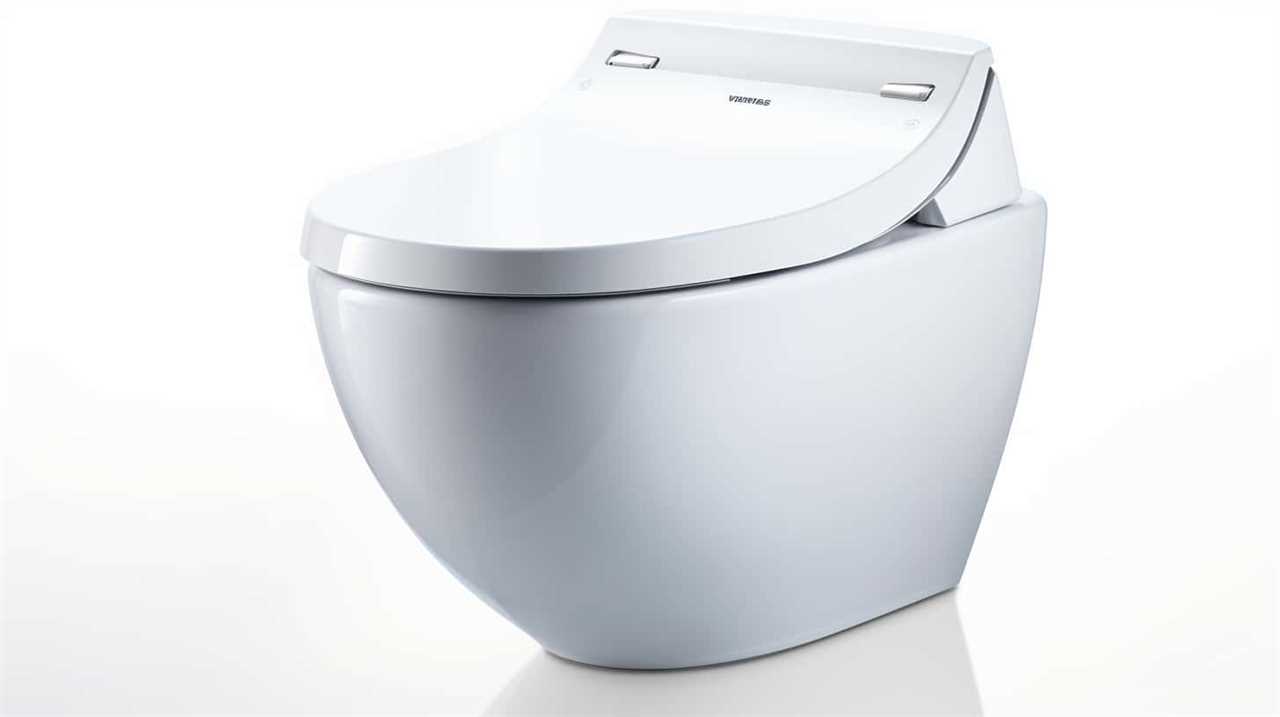
Environmentally-Friendly Disposal Options
To properly dispose of diapers in an environmentally-friendly manner, we should consider alternative methods that minimize their impact on the environment. Here are some options to consider:
- Use toilet paper alternatives: Instead of using regular toilet paper, you can opt for reusable cloth wipes or biodegradable toilet paper made from recycled materials. These alternatives reduce waste and are more eco-friendly.
- Choose biodegradable diaper options: Look for diapers that are made from biodegradable materials, such as bamboo or organic cotton. These diapers break down more easily in landfill conditions, reducing their environmental impact.
- Consider composting: If you have access to a composting facility, you can compost soiled diapers. However, it’s important to follow proper composting guidelines and ensure that the composting facility accepts diapers.
- Explore diaper recycling programs: Some companies offer diaper recycling programs where used diapers are collected and processed into other products. Research local programs to see if this option is available in your area.
- Reduce diaper usage: Ultimately, the most environmentally-friendly option is to reduce diaper usage by practicing elimination communication or using cloth diapers. This reduces waste and minimizes the environmental impact of diaper disposal.
Risks of Improper Disposal
To ensure proper diaper disposal etiquette and avoid potential risks, it’s important for us to be aware of the potential consequences of improper diaper disposal.
Improper disposal of diapers can pose significant health hazards and environmental concerns. First and foremost, it’s crucial to adhere to diaper disposal regulations set by local authorities.
Improperly disposed diapers can contaminate water sources, leading to the spread of harmful bacteria and viruses. Additionally, the presence of soiled diapers in landfills can release toxic substances into the environment, further polluting our surroundings.
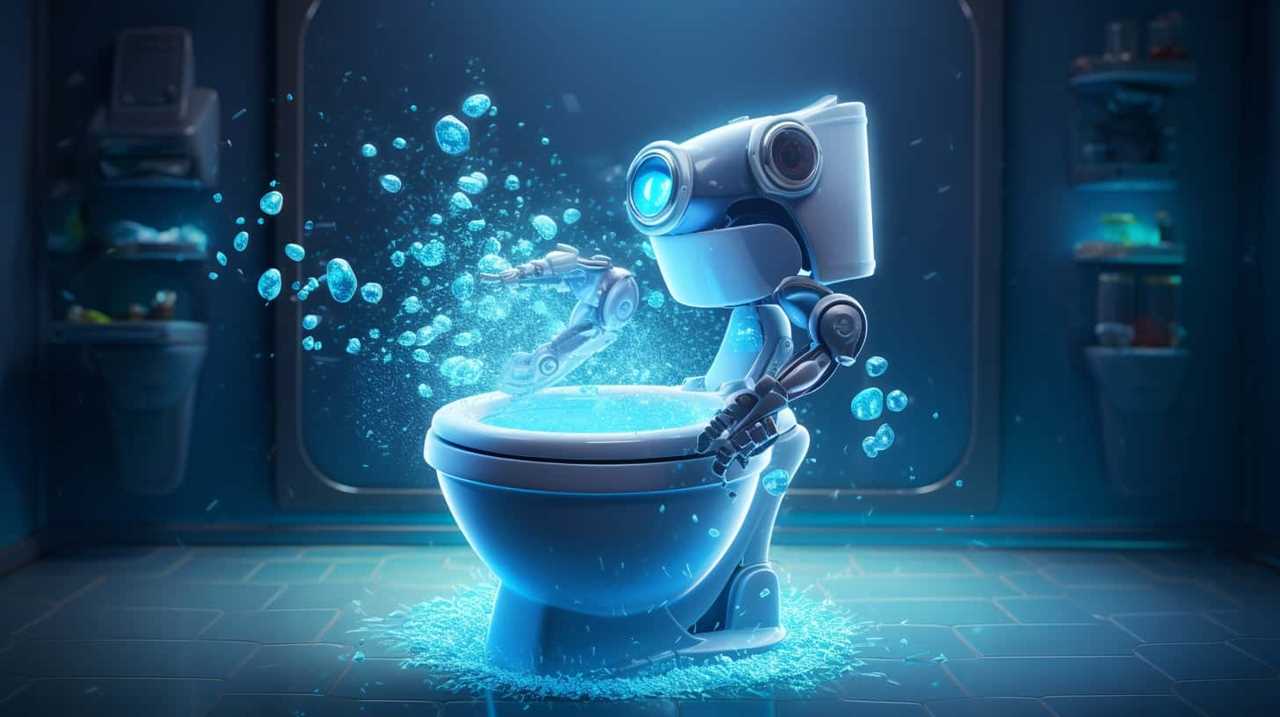
Moreover, improper disposal can attract pests and insects, creating unsanitary conditions. To mitigate these risks, it’s essential to follow proper diaper disposal methods, such as using sealed bags and designated diaper disposal bins.
Diaper Pail Options
We prefer using a diaper pail to dispose of our baby’s diapers. Diaper pails offer several benefits that make them a convenient and hygienic option for managing diaper waste.
Here are some recommended diaper pail options:
- Ubbi Steel Diaper Pail: This pail is made of steel, which helps to contain odors effectively.
- Playtex Diaper Genie Complete: With its innovative design, this pail keeps odors locked away and can hold up to 270 diapers.
- Munchkin Step Diaper Pail: This pail has a foot pedal for hands-free operation and a built-in odor control system.
- Dekor Plus Hands-Free Diaper Pail: This pail features a foot pedal and a unique refill system that allows for easy disposal.
- Tommee Tippee Simplee Diaper Pail: This compact pail is perfect for smaller spaces and offers a simple and efficient diaper disposal solution.
By using a diaper pail, you can conveniently and hygienically dispose of your baby’s diapers.

Now, let’s move on to the next section to make informed choices about diaper disposal methods.
Conclusion: Making Informed Choices
When it comes to making informed choices about diaper disposal, it’s important to consider the environmental impact of diapers and the proper methods of disposal.
Disposable diapers contribute to landfill waste and take centuries to decompose, while flushing them down the toilet can lead to clogged pipes and environmental pollution.
It’s crucial to explore alternative options such as compostable diapers or using diaper pails with proper disposal systems to minimize the environmental impact and make more sustainable choices for our planet.

Environmental Impact of Diapers
Frequently, we must consider the environmental impact of diapers in order to make informed choices. When it comes to diaper waste management, there are sustainable diaper options available that can help minimize the environmental impact. Here are some key points to keep in mind:
- Opt for biodegradable diapers: These diapers are made from plant-based materials that break down more easily than traditional diapers, reducing the amount of waste in landfills.
- Consider cloth diapers: Cloth diapers can be reused multiple times, reducing the overall waste generated. Look for organic cotton options for a more sustainable choice.
- Look for eco-friendly diaper brands: Some diaper brands prioritize sustainability and use materials that are renewable and eco-friendly.
- Use diaper composting services: These services collect used diapers and compost them in a controlled environment, turning them into nutrient-rich soil.
- Explore diaper recycling programs: Some companies offer diaper recycling programs that separate the different components of the diaper for recycling.
By considering these options, we can minimize the environmental impact of diapers while still meeting our baby’s needs.
Transitioning into the subsequent section about proper disposal methods, let’s explore the most effective ways to dispose of diapers.
Proper Disposal Methods
To properly dispose of diapers and make informed choices, it’s important to consider effective disposal methods that minimize environmental impact.
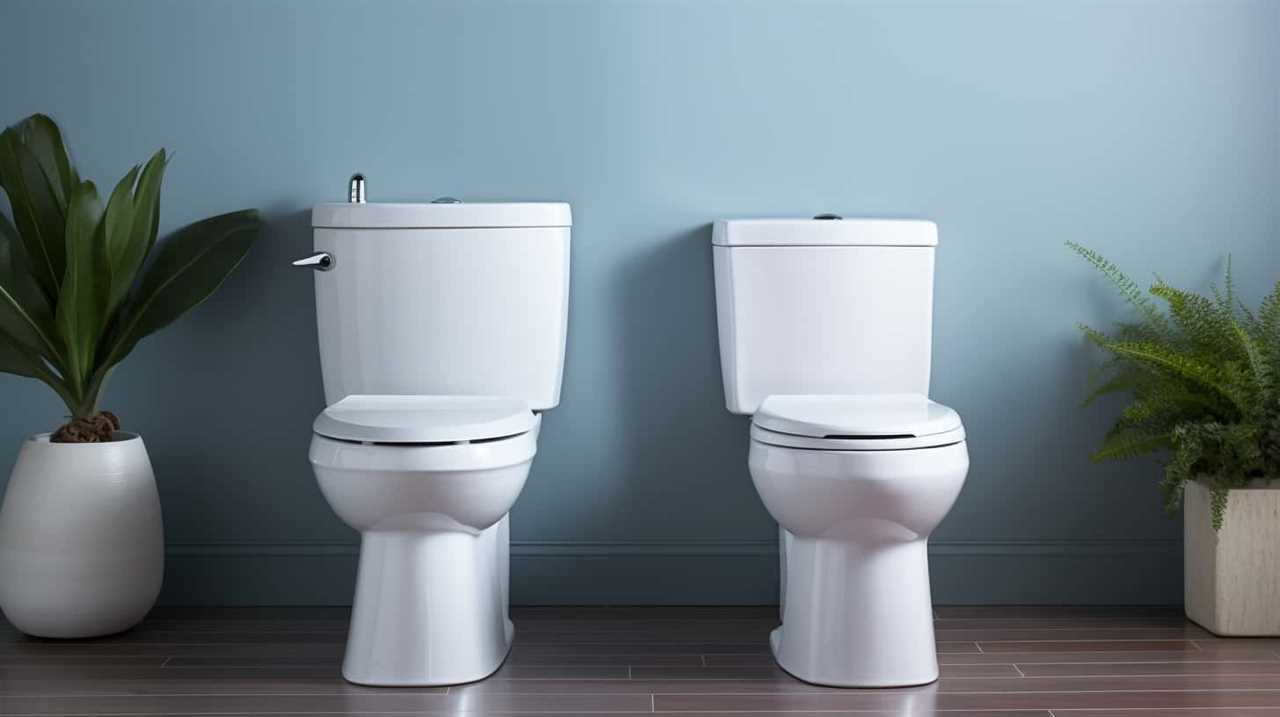
Fortunately, there are several diaper disposal options available that promote eco-friendly waste management.
One option is to use a diaper pail with a liner that can be tied and sealed before being disposed of in the regular trash.
Another option is to choose biodegradable diapers, which are designed to break down more easily in landfill conditions.
Additionally, some communities offer diaper composting programs, where soiled diapers are collected separately and processed into nutrient-rich compost.
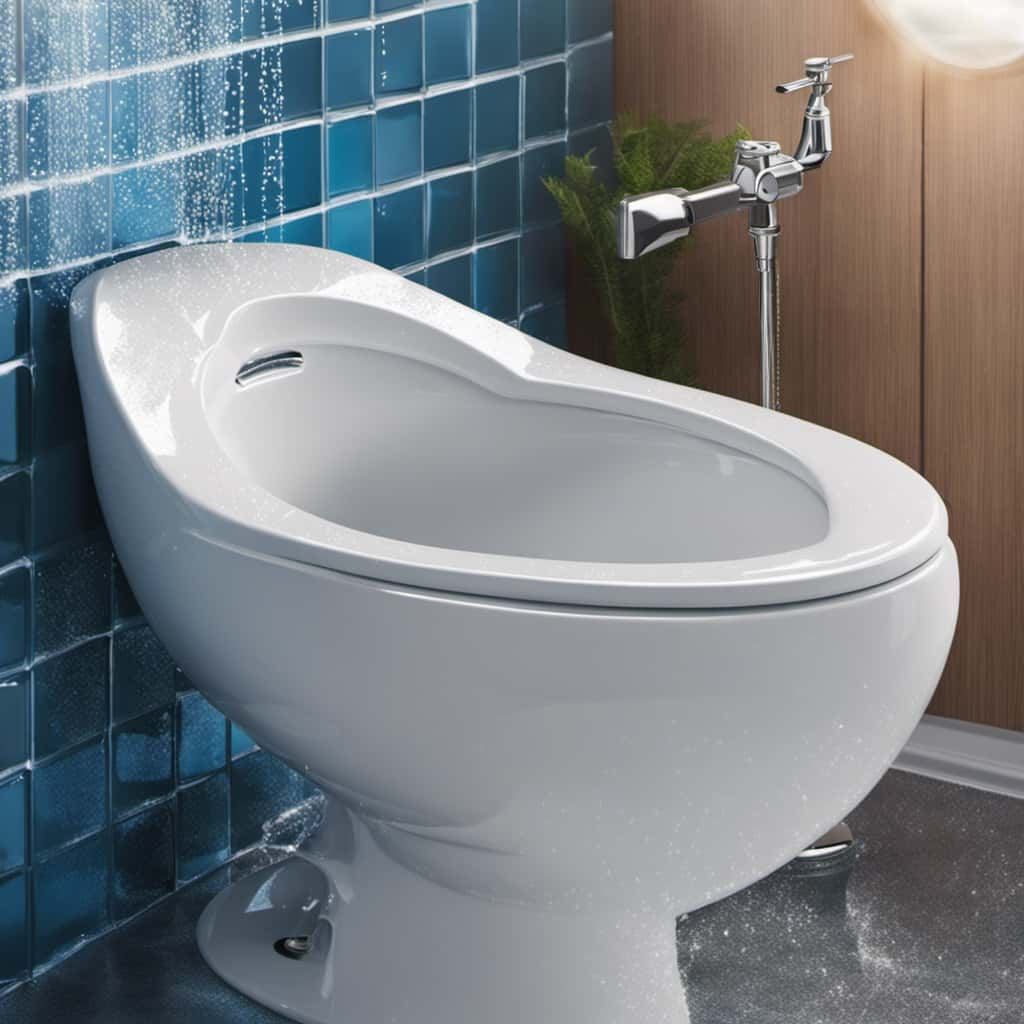
It’s crucial to research and understand the disposal options available in your area to ensure you’re making the most environmentally responsible choice.
Conclusion
In conclusion, while it may seem convenient to flush diapers down the toilet, the risks and consequences far outweigh any potential benefits. By doing so, you not only put your plumbing system at risk but also contribute to the strain on sewer systems and the environment.
Diapers aren’t designed to break down easily and can cause blockages and pollution. It’s best to opt for proper diaper disposal methods and make informed choices for a cleaner and functioning system.
With an impeccable eye for detail and a passion for bathroom-related, Ava leads our editorial team gracefully and precisely.
Under her guidance, Best Modern Toilet has flourished as the go-to resource for modern bathroom enthusiasts. In her free time, you might find Ava exploring antique shops and looking for vintage bathroom fixtures to add to her collection.
FAQ - Advanced Bathroom Queries
Why Should We Not Dispose of Medicine by Burning Them

We have all been guilty of it at some point – hastily getting rid of expired or unused medicine by burning them. But let me tell you, this seemingly harmless act has significant consequences.
Translated in English (US): We have all been guilty of it at some point – hastily disposing of expired or unused medicine by burning them. But let me tell you, this seemingly harmless act has far-reaching consequences.
The environmental impact alone is staggering. From air pollution and water contamination to soil degradation and potential health risks, the repercussions are undeniable.
In this article, we will delve into the meticulous research behind why we should never again resort to this seemingly convenient method of medicine disposal.
Key Takeaways
- Burning medicine releases harmful chemicals into the air, soil, and water, causing environmental contamination.
- Toxic substances, such as heavy metals and organic compounds, can persist in the environment, posing threats to ecosystems and human health.
- Burning medicine contributes to air pollution, which can lead to respiratory problems and even lung cancer.
- Water contamination is another consequence of burning medicine, affecting both surface and groundwater and harming aquatic life.
Environmental Impact
One of the reasons we shouldn’t dispose of medicine by burning them is because it can have a detrimental environmental impact. Proper waste management of unused or expired medications is crucial for protecting our environment.

When medications are burned, harmful chemicals can be released into the air, soil, and water, posing serious threats to ecosystems and human health. These chemicals can include toxic substances, such as heavy metals and organic compounds, which can contaminate the environment and persist for long periods of time.
To mitigate this environmental impact, it’s important to explore sustainable alternatives for medication disposal. Safe and environmentally-friendly options include participating in drug take-back programs, returning medications to pharmacies, or using designated collection sites. By adopting these sustainable practices, we can minimize the negative impact on our environment and promote a healthier and cleaner planet.
This issue of improper medication disposal is closely related to the problem of air pollution, which will be discussed in the next section.
Air Pollution
Burning medicine for disposal contributes to air pollution by releasing harmful chemicals into the atmosphere. This form of disposal can have serious consequences for both indoor and outdoor air quality. When medicines are burned, they release toxic substances such as dioxins, furans, and heavy metals. These pollutants can linger in the air for extended periods, posing a risk to human health.

Indoor exposure to these pollutants can lead to respiratory problems, including asthma, bronchitis, and even lung cancer. It’s crucial to recognize the potential dangers associated with burning medicine and to seek alternative methods of disposal.
Water Contamination
Continuing our discussion on the negative impacts of burning medicine for disposal, we must now address the issue of water contamination. Improper disposal of medicine through burning can have detrimental effects on water sources, contributing to water scarcity and posing a threat to aquatic life. When medications are burned, their chemical compounds are released into the air, and eventually find their way into water bodies through rainfall or run-off. This can contaminate both surface and groundwater, affecting the delicate balance of aquatic ecosystems. To illustrate the potential consequences, consider the following table:
| Impacts of Water Contamination | |
|---|---|
| Water Scarcity | Decreased availability of clean water for human consumption and agriculture, leading to economic and health implications. |
| Aquatic Life | Disruption of ecosystems, harm to fish and other aquatic organisms due to exposure to toxic substances, and potential loss of biodiversity. |
Understanding the detrimental effects of water contamination caused by burning medicine, it becomes evident that alternative disposal methods are necessary to prevent further harm to our water resources. This leads us to the next section, where we will explore the issue of soil degradation.
Soil Degradation
As we delve into the issue of soil degradation, it’s crucial to recognize the direct connection between improper medicine disposal and the negative impact it has on the health and fertility of our soil.

Soil degradation refers to the deterioration of soil quality, resulting in reduced agricultural productivity and ecosystem health.
Improper disposal of medicine, such as burning them, can contribute to soil degradation through the release of harmful chemicals and toxins. These substances can disrupt the delicate balance of soil microorganisms and nutrient cycles, leading to reduced soil fertility.
Additionally, the loss of vegetation cover and erosion control caused by soil degradation further exacerbate the problem.
To ensure sustainable agriculture and protect our soil, it’s imperative that we adopt proper medicine disposal methods that minimize the negative impact on soil health and promote a more resilient and productive ecosystem.

Health Risks
Using any form of burning to dispose of medicine poses significant health risks to both individuals and communities. It’s crucial to understand these risks and promote proper disposal methods to protect our well-being.
Here are four reasons why burning medicine can have detrimental effects on our health:
- Toxic fumes: When medications burn, they release harmful chemicals into the air, including dioxins, furans, and volatile organic compounds (VOCs). These toxic fumes can cause respiratory problems, eye irritation, and even contribute to the development of diseases like cancer.
- Air pollution: Burning medicine contributes to air pollution, which affects not only the immediate surroundings but also the wider environment. This pollution can exacerbate respiratory conditions, harm wildlife, and degrade air quality, leading to various health issues for both humans and animals.
- Long-term effects: Exposure to the toxic substances released during burning can have long-term health effects. Prolonged inhalation of these chemicals may lead to chronic respiratory problems, neurological disorders, and reproductive issues.
- Community impact: Improper disposal practices, such as burning medicine, can negatively impact the entire community. It can contaminate water sources, harm ecosystems, and compromise the health of vulnerable populations, such as children and the elderly.
To prevent these health risks, it’s essential to educate the public about proper disposal methods, such as participating in take-back programs or using designated medication drop-off sites. By adopting these responsible practices, we can safeguard our health and protect the environment for future generations.
Frequently Asked Questions
How Can I Properly Dispose of Expired or Unused Medication?
Proper disposal methods for expired or unused medication include eco-friendly ways. We should never burn medicine as it can release harmful chemicals into the air. Instead, consider returning them to a pharmacy or using a drug take-back program.

Are There Any Alternative Methods of Medication Disposal That Are More Environmentally Friendly?
Eco-friendly options for medication disposal include participating in community medication take back programs. Burning medicine is harmful to the environment and should be avoided due to the potential release of toxins.
Can Burning Medicine Release Toxic Chemicals Into the Air?
Burning medicine can release toxic chemicals into the air, contributing to air pollution. This is why it is important to find alternative methods of medication disposal that are more environmentally friendly.
Is It Safe to Flush Medication Down the Toilet?
Toilet flushing medication may seem convenient, but is it safe for the environment? The impact of medication disposal on water sources is concerning. Let’s explore alternative methods to protect our ecosystems.
Can Improper Disposal of Medication Lead to the Development of Antibiotic-Resistant Bacteria?
Improper medication disposal can contaminate water sources, potentially leading to the development of antibiotic-resistant bacteria. Pharmaceutical companies play a crucial role in promoting proper disposal methods to mitigate this impact on public health.

Conclusion
In conclusion, it’s imperative that we refrain from disposing of medicine by burning them due to the detrimental environmental impact it has. Not only does it contribute to air pollution, water contamination, and soil degradation, but it also poses health risks.
Just like a single drop of ink can spread and stain an entire glass of water, burning medicine releases harmful substances that can spread and contaminate our surroundings, affecting not only the present but also the future generations.
Let’s be responsible stewards of our planet and seek proper disposal methods for unused medications.
With an impeccable eye for detail and a passion for bathroom-related, Ava leads our editorial team gracefully and precisely.
Under her guidance, Best Modern Toilet has flourished as the go-to resource for modern bathroom enthusiasts. In her free time, you might find Ava exploring antique shops and looking for vintage bathroom fixtures to add to her collection.
FAQ - Advanced Bathroom Queries
New Toilet

Introducing our new toilet, a marvel of efficient and eco-friendly design, advanced technology, and sleek aesthetics. This revolutionary bathroom fixture redefines comfort and convenience.
Prepare to have your expectations surpassed as we introduce you to a toilet that not only enhances hygiene and cleanliness but also offers a superior experience. Embrace the future of bathroom technology and indulge in the mastery of this state-of-the-art creation.
Welcome to a world where even the most mundane tasks are elevated to new heights.
Key Takeaways
- The ‘New Toilet’ is designed to be efficient and eco-friendly, incorporating water-saving features and sustainable materials.
- It offers advanced technology for a superior experience, including adjustable water pressure, temperature control, and personalized settings.
- The ‘New Toilet’ prioritizes comfort and convenience, with ergonomic design, user-friendly controls, and self-cleaning functions.
- It boasts sleek and modern aesthetics, with a space-saving design and thoughtful finishing touches for a visually pleasing look.
Efficient and Eco-Friendly Design
To ensure an efficient and eco-friendly design, we focused on incorporating water-saving features and reducing carbon emissions in our new toilet. Our toilet is equipped with innovative water-saving features that allow for a significant reduction in water consumption without compromising on performance. The dual-flush system, for example, offers the option to use a lower volume of water for liquid waste, further conserving water.

Additionally, we made a conscious effort to use sustainable materials in the construction of our toilet. By utilizing recycled and eco-friendly materials, we minimize the environmental impact associated with the production and disposal of our product. These water-saving features and sustainable materials work together to create a toilet that isn’t only efficient but also environmentally conscious.
Transitioning into the subsequent section about ‘advanced technology for a superior experience’, we’ve also integrated advanced technological features to enhance the overall user experience.
Advanced Technology for a Superior Experience
We have incorporated cutting-edge technology to enhance the overall user experience of our new toilet. Here are four smart features that truly set our product apart:
- Adjustable Water Pressure: With our toilet, users have the ability to customize the water pressure to their liking. This ensures a comfortable and refreshing cleanse every time.
- Temperature Control: Our advanced technology allows users to adjust the temperature of the water for both washing and bidet functions. This customizable feature ensures a pleasant experience, especially during colder seasons.
- Self-Cleaning Nozzle: The built-in self-cleaning nozzle ensures optimal hygiene by automatically cleaning itself before and after each use. This eliminates the need for manual cleaning and helps maintain cleanliness and freshness.
- Personalized Settings: Our toilet offers user customization through personalized settings. Users can save their preferred water pressure, temperature, and other settings, making their experience convenient and tailored to their preferences.
With these smart features and user customization options, our new toilet provides a superior experience that guarantees comfort, cleanliness, and convenience.

Comfort and Convenience Redefined
Our new toilet revolutionizes comfort and convenience for users. With its ergonomic design and user-friendly features, it offers an unparalleled experience in bathroom technology.
The toilet’s ergonomic design ensures optimal comfort during use, with a contoured seat that supports proper posture and reduces strain. It also features user-friendly controls that are intuitively placed for easy access, allowing for effortless operation.
Additionally, the toilet incorporates advanced technologies such as a self-cleaning function and a motion sensor for hands-free flushing, further enhancing convenience and hygiene. These innovative features provide users with a seamless and comfortable experience every time they use the toilet.
As we delve into the next section about sleek and modern aesthetics, we’ll see how our new toilet combines both form and function to elevate the overall bathroom experience.

Sleek and Modern Aesthetics
With its sleek and modern aesthetics, our new toilet seamlessly blends style and functionality. Here’s how it achieves its refined look while maximizing space efficiency:
- Innovative Materials: Our toilet is crafted from cutting-edge materials that not only enhance its durability but also contribute to its sleek appearance. The use of innovative materials ensures a clean and polished look that complements any bathroom decor.
- Space Saving Design: We understand the importance of optimizing space in modern bathrooms. That’s why our new toilet features a space-saving design that takes up minimal floor space without compromising on comfort. Its compact dimensions make it an ideal choice for smaller bathrooms or powder rooms.
- Streamlined Silhouette: The sleek lines and slim profile of our toilet create a streamlined silhouette that exudes contemporary elegance. Its minimalist design adds a touch of sophistication to any bathroom, making it a focal point and enhancing the overall aesthetic.
- Thoughtful Finishing Touches: From the sleek chrome accents to the smooth and seamless surfaces, every detail of our toilet has been meticulously designed to create a visually pleasing and cohesive look. The attention to detail ensures that our toilet not only looks great but also functions flawlessly.
Enhanced Hygiene and Cleanliness
To ensure optimal hygiene and cleanliness, our new toilet incorporates advanced sanitation features. These features provide numerous health benefits and significantly reduce the risk of bacterial contamination.
The toilet is equipped with a self-cleaning system that automatically cleans the bowl after each use, eliminating the need for manual scrubbing. This not only saves time and effort but also ensures a germ-free environment.
Furthermore, the toilet is designed with antimicrobial materials that prevent the growth and spread of bacteria. The seat is coated with a special antibacterial surface, providing an additional layer of protection against harmful microorganisms.

The advanced flushing mechanism utilizes high-pressure water jets to thoroughly rinse the bowl, leaving it spotlessly clean.
With our new toilet, you can enjoy the peace of mind knowing that your bathroom remains hygienic and free from harmful bacteria.
Frequently Asked Questions
What Are the Dimensions of the ‘New Toilet’ and Will It Fit in My Small Bathroom?
Toilet dimensions and bathroom space are important considerations when selecting a new toilet. We need to determine if the new toilet will fit in our small bathroom before making a purchase.
How Does the ‘New Toilet’ Contribute to Water Conservation and What Is Its Water Usage Rate?
The new toilet’s design incorporates water-saving technology, significantly reducing water usage. Its water usage rate is carefully optimized to conserve water while still ensuring effective flushing.

Can the ‘New Toilet’ Be Easily Installed in an Existing Bathroom or Does It Require Professional Assistance?
Installing the ‘new toilet’ can be a breeze or a challenge, depending on your DIY skills and experience. While some may find it straightforward, others might prefer professional assistance for a seamless installation process.
Is the ‘New Toilet’ Equipped With Any Additional Features Such as Heated Seats or Automatic Flushing?
Yes, the ‘new toilet’ is equipped with additional features such as heated seats and automatic flushing. These features provide enhanced comfort and convenience, making the toilet a modern and efficient choice for any bathroom.
Does the ‘New Toilet’ Come With a Warranty and What Is the Expected Lifespan of the Product?
The warranty coverage for this product ensures peace of mind, while the expected lifespan exceeds industry standards. Our team has thoroughly tested and evaluated the ‘new toilet’ to guarantee its longevity and durability.
Conclusion
In conclusion, this new toilet revolutionizes the bathroom experience with its efficient and eco-friendly design, advanced technology, and sleek aesthetics.

With enhanced hygiene and cleanliness features, it offers a superior level of comfort and convenience.
This innovative toilet is truly a game-changer, taking bathroom experiences to new heights.
Prepare to be amazed by its superior performance and indulge in the luxury it provides.
You won’t believe how you ever lived without it!

With an impeccable eye for detail and a passion for bathroom-related, Ava leads our editorial team gracefully and precisely.
Under her guidance, Best Modern Toilet has flourished as the go-to resource for modern bathroom enthusiasts. In her free time, you might find Ava exploring antique shops and looking for vintage bathroom fixtures to add to her collection.
FAQ - Advanced Bathroom Queries
Is It Ok to Flush Wipes Down the Toilet

Are you questioning the safety of flushing wipes down the toilet? We have the information you need.
In this article, we’ll delve into the environmental impact of flushing wipes, the risks it poses to plumbing and sewer systems, and the effects on water treatment facilities.
We’ll also explore alternative methods of disposal and provide you with the proper ways to ensure a clean and efficient system.
Get ready to master the art of responsible waste management.

Key Takeaways
- Flushing wipes can have a detrimental environmental impact, as they are not biodegradable and can end up in waterways, contaminating rivers, lakes, and oceans.
- Wipes can clog sewer systems and contribute to the formation of fatbergs, leading to sewage backups in homes, businesses, and neighborhoods.
- Flushing wipes can also cause problems in water treatment facilities, reducing their efficiency and leading to untreated wastewater release and increased water pollution.
- To prevent these issues, it is important to find alternative disposal methods for wipes, such as using biodegradable wipes, reusable cloth wipes, or toilet paper, and properly disposing of wipes in the trash, recycling, or composting them.
Environmental Impact of Flushing Wipes
Frequently, we flush wipes down the toilet without considering the detrimental environmental impact they have. Wipes pollution is a growing concern as these products aren’t biodegradable and can end up in our waterways, causing significant harm to marine life.
When wipes are flushed, they can clog sewer systems and contribute to the formation of fatbergs, which are large masses of solid waste that can block sewage pipes. These blockages can lead to sewage overflow, contaminating rivers, lakes, and oceans with harmful bacteria and chemicals.
Marine life is particularly vulnerable to the impact of wipes pollution. Marine animals can mistake wipes for food, leading to internal injuries and even death. Additionally, the chemicals present in wipes can leach into the water, causing further harm to aquatic ecosystems.
It’s essential to understand the consequences of flushing wipes and explore more sustainable alternatives to protect our environment and marine life.
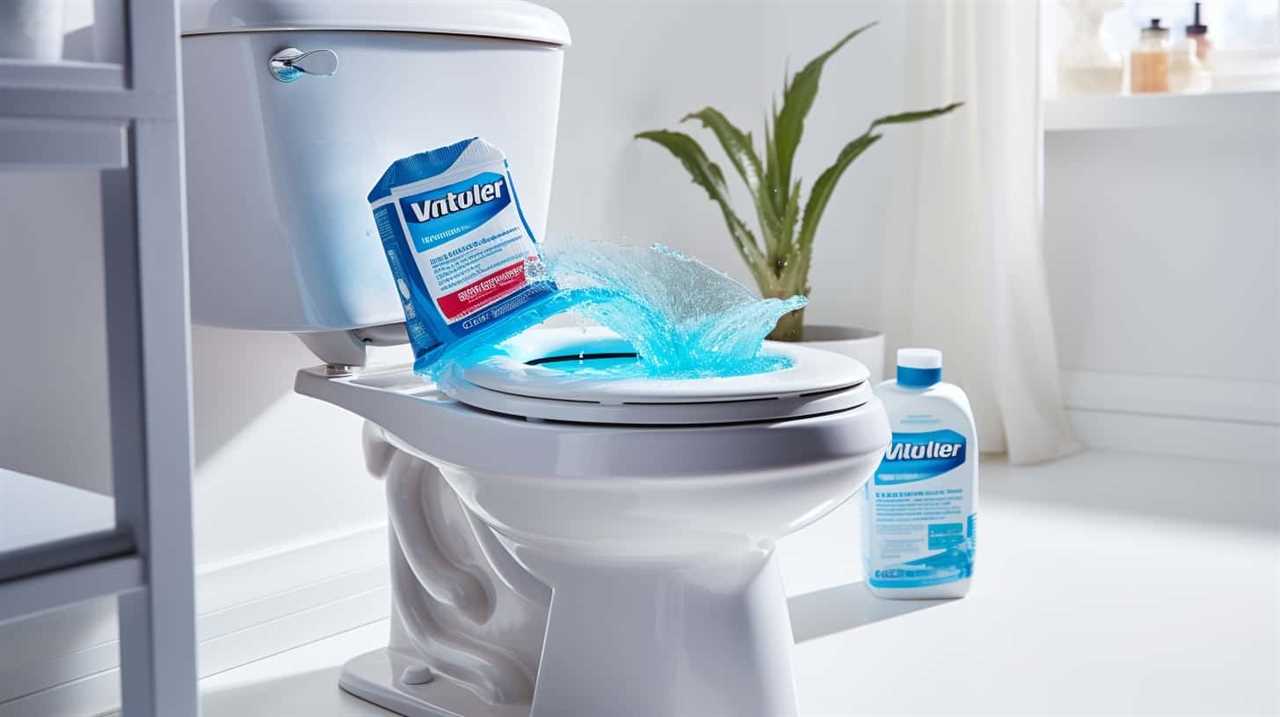
Risks to Plumbing and Sewer Systems
As we continue the discussion on the environmental impact of flushing wipes, it’s important to address the risks that these products pose to plumbing and sewer systems. Flushing wipes down the toilet can lead to serious risks to the infrastructure and result in costly repairs. Here are three specific risks associated with this practice:
- Clogging: Wipes, especially those labeled as ‘flushable,’ don’t break down easily like toilet paper. They can accumulate in pipes and sewer lines, causing blockages that can disrupt the flow of wastewater.
- Sewer backups: When wipes clog the sewer system, it can lead to sewage backups in homes, businesses, and even entire neighborhoods. This not only poses health risks but also requires expensive repairs to fix the damage.
- Overloading treatment plants: Wipes that make their way to water treatment facilities can overload the system’s capacity to filter out solids, leading to malfunctions and increased operational costs.
Considering these risks to infrastructure and the potential cost of repairs, it’s crucial to find alternative disposal methods for wipes.
Now, let’s explore the effects of flushing wipes on water treatment facilities.
Effects on Water Treatment Facilities
Now, let’s delve into how flushing wipes down the toilet affects water treatment facilities. When wipes are flushed, they can cause significant problems for these facilities.

One of the main concerns is water pollution. Wipes don’t break down easily like toilet paper, so they can clog pipes and pumps in the treatment process. This can lead to backups and overflows, resulting in untreated wastewater being released into the environment.
Additionally, wipes can accumulate in screens and filters, reducing the efficiency of the treatment process. This not only increases the cost of operations but also increases the risk of pollutants entering our waterways.
Therefore, it’s crucial to dispose of wipes properly in the trash to avoid clogging issues and water pollution in our treatment facilities.
Alternatives to Flushing Wipes
We often find ourselves wondering about alternative methods for disposing of wipes instead of flushing them down the toilet. Fortunately, there are several eco-friendly options and reusable alternatives available that can help us reduce waste and protect the environment.
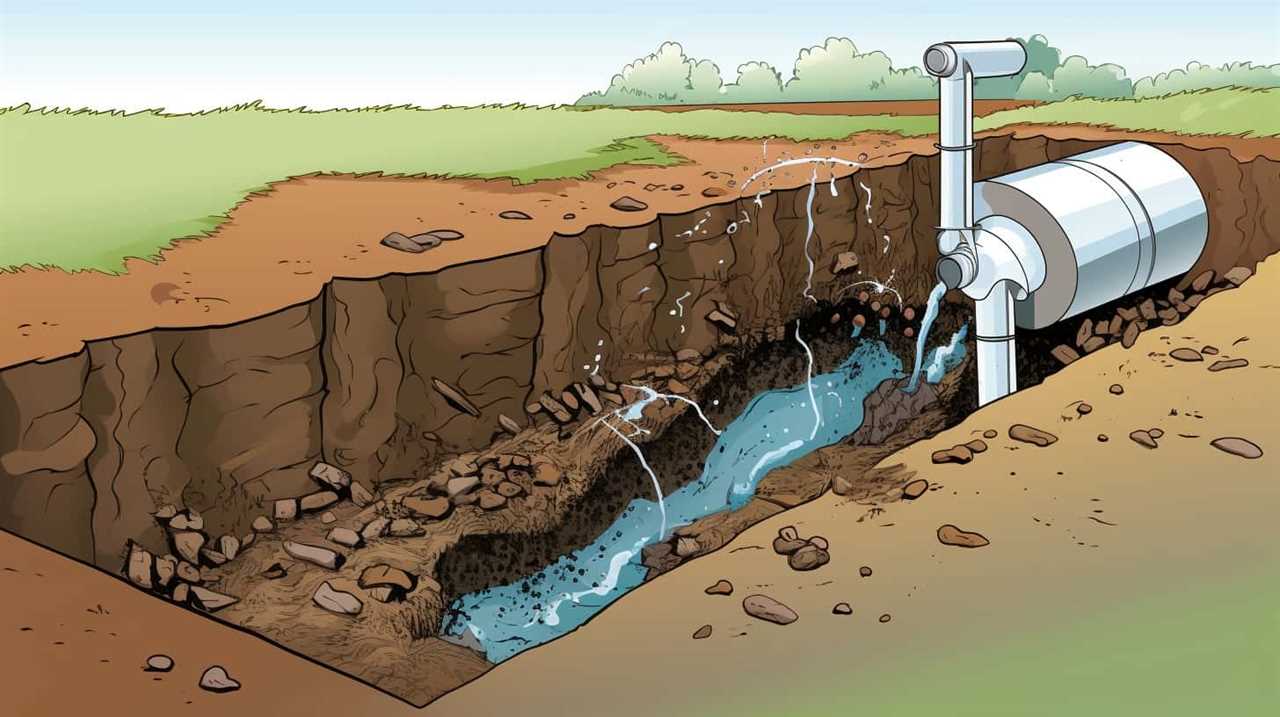
Here are three options to consider:
- Use biodegradable wipes: Look for wipes that are specifically labeled as biodegradable. These wipes are designed to break down naturally over time, reducing their impact on the environment.
- Switch to reusable cloth wipes: Consider using reusable cloth wipes instead of disposable ones. These can be made from soft, absorbent materials like cotton or bamboo and can be washed and reused multiple times, reducing waste and saving money in the long run.
- Opt for toilet paper: In many cases, wipes are used as an alternative to toilet paper. However, using toilet paper is a more sustainable option as it’s specifically designed to break down quickly in water and is less likely to cause blockages in sewage systems.
Proper Disposal Methods for Wipes
To properly dispose of wipes, it is important to follow specific guidelines that ensure minimal environmental impact and prevent potential blockages in sewage systems. While flushing wipes down the toilet is not recommended, there are alternative methods that can be used for their proper disposal. One option is to recycle wipes that are made from recyclable materials. Many communities have recycling programs in place that accept certain types of wipes. Another option is composting wipes that are biodegradable. These wipes can be added to a compost pile or bin, where they will break down naturally over time. By recycling or composting wipes, we can reduce the amount of waste that ends up in landfills and minimize the negative impact on the environment.
| Disposal Method | Environmental Impact |
|---|---|
| Recycling | Minimal |
| Composting | Minimal |
Frequently Asked Questions
Are All Types of Wipes Equally Harmful to the Environment When Flushed Down the Toilet?
Different types of wipes have varying degrees of harm to the environment when flushed down the toilet. Flushing wipes can lead to clogged pipes, sewage backups, and water pollution, posing serious consequences for our ecosystems.
Can Flushing Wipes Down the Toilet Cause Blockages in Household Plumbing?
Flushing wipes down the toilet can lead to potential plumbing issues. They can cause blockages and clog pipes, resulting in costly repairs. Additionally, the environmental impact of flushing wipes is significant, as they can contribute to sewer backups and pollution.

Do Water Treatment Facilities Have Effective Systems in Place to Remove Wipes From Wastewater?
Water treatment facilities utilize advanced technology to effectively remove wipes from wastewater. However, flushing wipes down the toilet can still have a negative environmental impact as they may clog pipes and contribute to the buildup of non-biodegradable waste.
What Are Some Alternative Methods of Disposing of Wipes That Are Safe for the Environment?
Eco friendly disposal options for wipes include throwing them in the trash or using biodegradable wipes. Proper disposal methods are crucial to protect the environment and prevent clogged pipes and sewage backups.
Can Wipes Be Composted or Recycled?
Composting wipes can have numerous benefits, such as enriching the soil and reducing waste. However, not all wipes are compostable, so it’s important to check the packaging. Recycling options for wipes may vary depending on the materials used.
Conclusion
In conclusion, while it may be convenient to flush wipes down the toilet, it isn’t okay due to the significant environmental impact, risks to plumbing and sewer systems, and effects on water treatment facilities.

Despite claims of ‘flushable’ wipes, they can still cause clogs and damage to infrastructure.
To protect the environment and maintain proper functioning of our systems, it’s best to dispose of wipes in the trash or explore alternatives such as biodegradable options.
With an impeccable eye for detail and a passion for bathroom-related, Ava leads our editorial team gracefully and precisely.
Under her guidance, Best Modern Toilet has flourished as the go-to resource for modern bathroom enthusiasts. In her free time, you might find Ava exploring antique shops and looking for vintage bathroom fixtures to add to her collection.
-

 Bathroom Enhancements2 months ago
Bathroom Enhancements2 months agoWill Hot Bath Lower Blood Pressure
-

 FAQ - Advanced Bathroom Queries3 months ago
FAQ - Advanced Bathroom Queries3 months agoWhich Countries Use Bidets the Most
-

 Reviews1 month ago
Reviews1 month agoLDian Smart Toilet Review [2024]
-

 Reviews2 months ago
Reviews2 months agoKohler Innate Smart Toilet Review [2024]
-

 Reviews2 months ago
Reviews2 months agoKohler NUMI 2.0 Smart Toilet Review [2024]
-

 Reviews2 months ago
Reviews2 months agoCANEST Smart Toilet Review: The Ultimate Bathroom Upgrade [2024]
-

 Toilet Types3 months ago
Toilet Types3 months agoAre Bleach Tablets Bad for Your Toilet
-

 Reviews2 months ago
Reviews2 months agoWoodbridge B0970S Smart Bidet Toilet Review [2024]






















